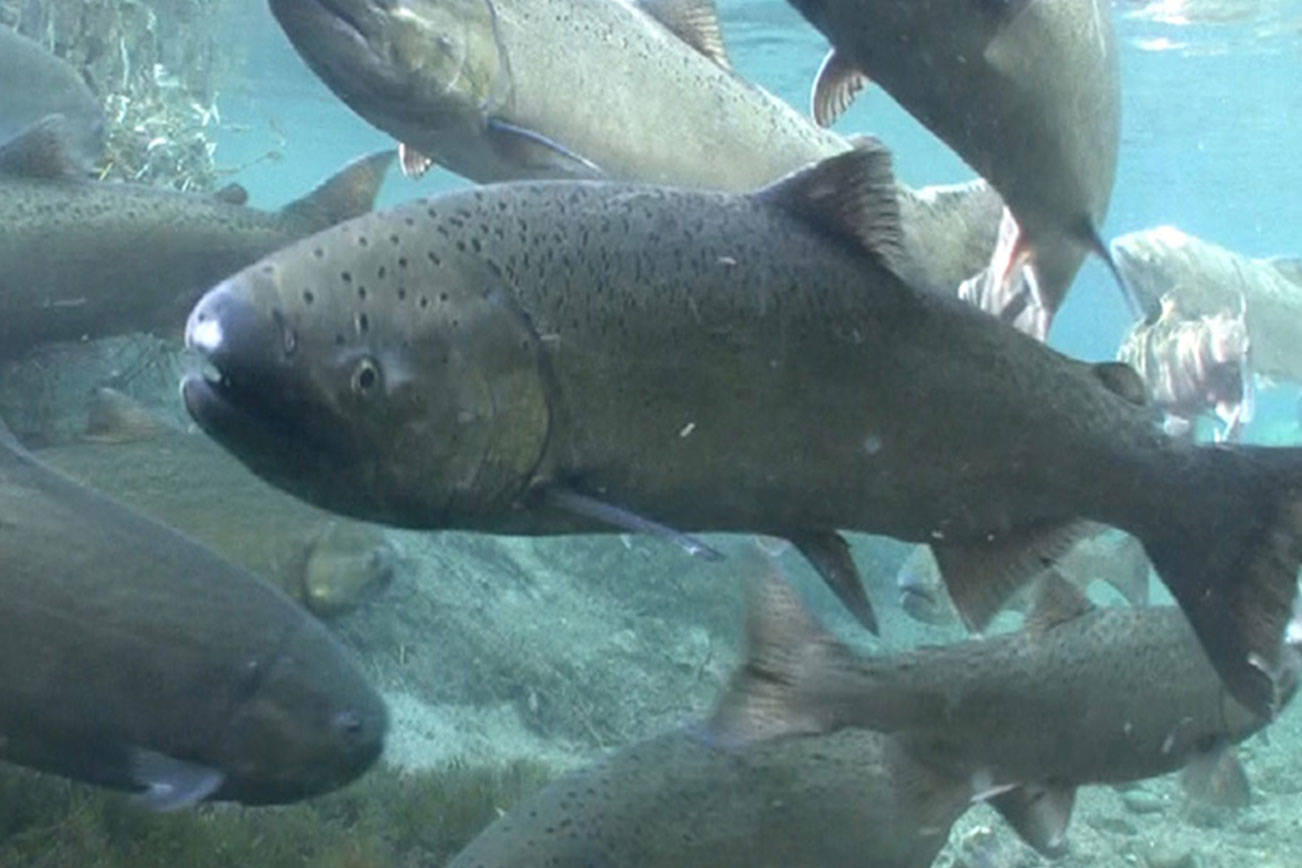When an idea is hit with criticism from all sides, it can mean it was either a bad plan to start with or a brilliant vision that made too many uncomfortable with the compromises it required.
Take your pick as to which applies, but the latter appears to be the experience of a proposal by an Idaho Republican congressman to save salmon and steelhead runs on the 1,078-mile Snake River — the largest tributary of the Columbia River that runs through southeast Washington and crosses Idaho into Montana — by breaching Washington state’s four lower Snake River hydroelectric dams.
By removing the dams, fish spawning and rearing habitat would be restored with greatly improved hopes that endangered runs of salmon and steelhead would be saved and revitalized, boosting sports and commercial fisheries, feeding hungry — and also endangered — orca whales and other wildlife and protecting the heritage, fishing rights and economies of Northwest Indian tribes and the culture of the Northwest itself.
Dam removal, albeit it on a smaller scale, already is showing promise on the Olympic Peninsula’s Elwha River, which saw two salmon-blocking dams removed as of 2014. Salmon and other fish have responded with the largest returns of adult chinook salmon since the late 1980s and the return of summer steelhead and bull trout to the river’s uppermost streams, The Seattle Times reported in October.
Long-discussed, removal of the four lower Snake dams had faced opposition even before last year’s proposal by Rep. Mike Simpson, R-Idaho, condemned because the dams’ removal could mean a loss of hydroelectric power production and potential losses of irrigation supply and barge transportation for the region’s agricultural economy.
Simpson’s plan sought to address those and other concerns by outlining $33.5 billion in federal spending that would have diverted the Snake around the dams — essentially mothballing the hydroelectric plants — but also financing infrastructure and other projects to assure continued irrigation and transportation access, while funding projects to replace and increase the supply of clean, sustainable electric energy in the region.
Recently, Simpson saw an opportunity to fund what he’s dubbed the Columbia Basin Initiative, as part of President Biden’s infrastructure and jobs plan, now being prepared for consideration by Congress.
Simpson’s imitative found support from some environmental groups, Oregon Gov. Kate Brown and a Portland-area Democratic member of Congress, and many of the region’s Native American tribes, but was largely panned by Eastern Washington communities, Simpson’s fellow Northwest Republican members of Congress and even some environmental groups, who opposed compromise measures that would have renewed licenses for all dams in the larger Columbia Basin for 35 to 50 years and would have imposed a 25-year moratorium on lawsuits against dams related to salmon and steelhead under the Endangered Species Act, the Clean Water Act and other regulatory acts.
But the plan’s inclusion in Biden’s infrastructure package is now unlikely following a joint statement earlier this month from U.S. Sen. Patty Murray, D-Wash., and Gov. Jay Inslee, that each believed Simpson’s proposal could not be included in the infrastructure package, public radio’s Northwest News Network and others reported. U.S. Sen. Maria Cantwell later made a similar statement.
Instead, Murray and Inslee recommended continued work and regional collaboration to protect and restore salmon populations throughout the Columbia Basin, while ensuring that tribal treaty rights were honored, reliable river transportation was ensured, access to commercial and sports fishing continued, farmers’ competitiveness was protected and affordable clean energy remained in ample supply.
In the statement, Murray and Inslee said that removal of the lower Snake dams should remain under consideration, but sought an acceleration of a separate program, the Columbia Basin Collaborative, involving an agreement signed by Washington, Oregon, Idaho and Montana last October to seek solutions based on science, community-driven participation and consensus.
The question now, in the minds of some who had supported Simpson’s plan, is can such initiatives produce results in time to save salmon?
“We don’t have time to waste,” said Jacqueline Koch, regional communications manager for the National Wildlife Federation, which with other environmental groups, urged consideration of Simpson’s plan. “If (Murray and Inslee) want to save salmon and orca, it has to happen now; action can’t be further delayed.”
“Salmon runs are on the cusp of extinction,” she said in an interview.
It’s true that debate over the Snake dams focused much attention on just the one river system — although still a major one — when solutions are needed throughout all Northwest river watersheds, the western states’ coasts and the greater Salish Sea.
And solutions for protecting fish habitat within the Columbia Basin and throughout the Northwest are progressing:
Increased spill from Columbia River dams is showing promise in allowing more young salmon to avoid dam turbines and survive their journey to the ocean to make their eventual return.
The Washington state Legislature has funded work — with more to come if a major transportation package is funded — to replace culverts beneath roads and highways that block fish passage.
Work is also progressing to enhance and rehabilitate estuary habitat for fish and wildlife.
But acceleration of all that work and more is imperative, and the onus is on leaders throughout the Northwest in all states, from both parties. With or without Simpson’s plan for removal of the Snake dams, there are key projects that must be included in the federal infrastructure package; efforts also should be made to increase attention to and viability of the Columbia Basin Collaborative.
“We need Inslee, Murray and Cantwell to continue to engage and keep moving their concerns and action forward,” Koch said. “They have to keep the promises they’ve made.”
–
This editorial was produced by The Daily Herald (Everett) Editorial Board. The Herald is a sister newspaper of the Mercer Island Reporter.



